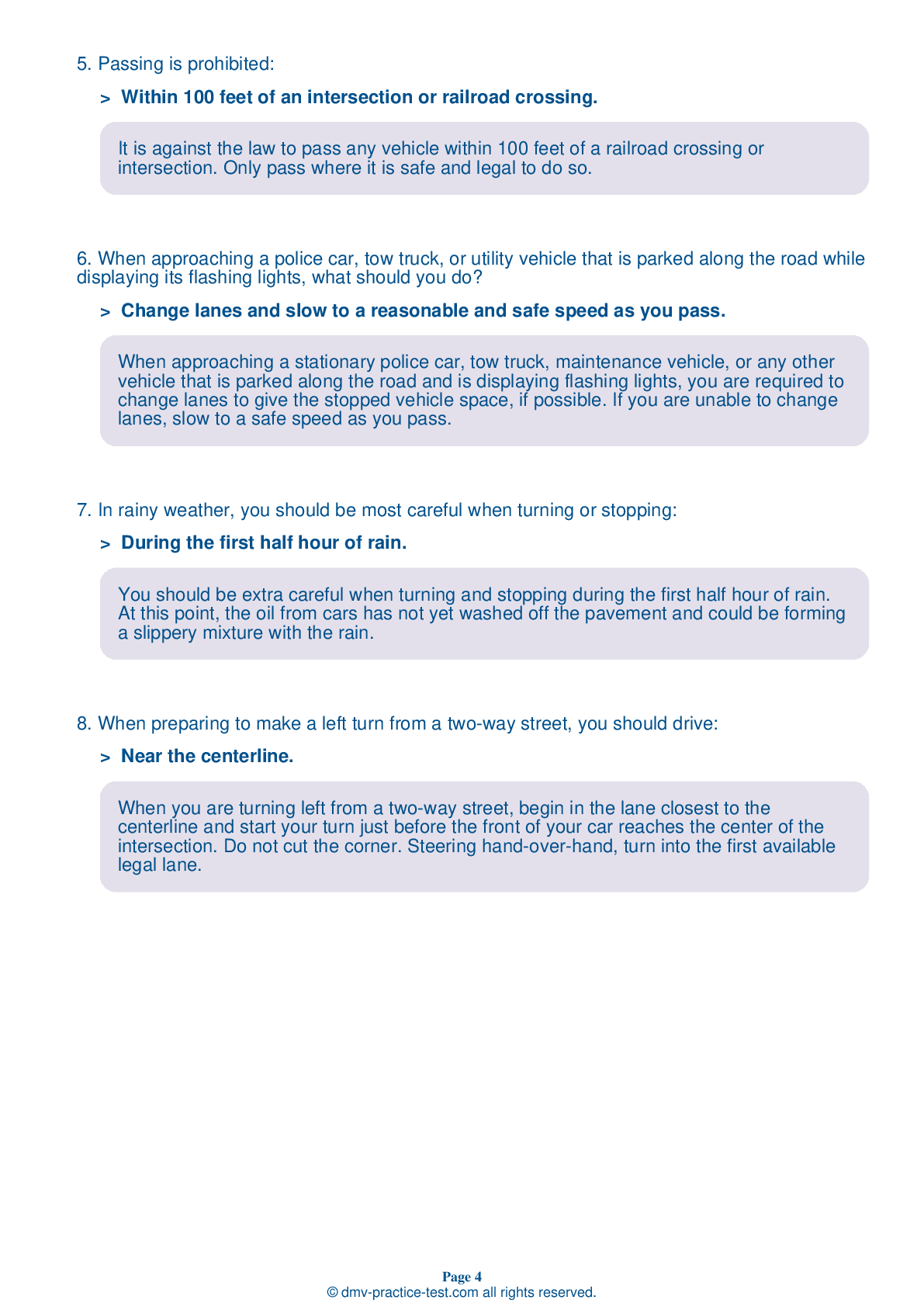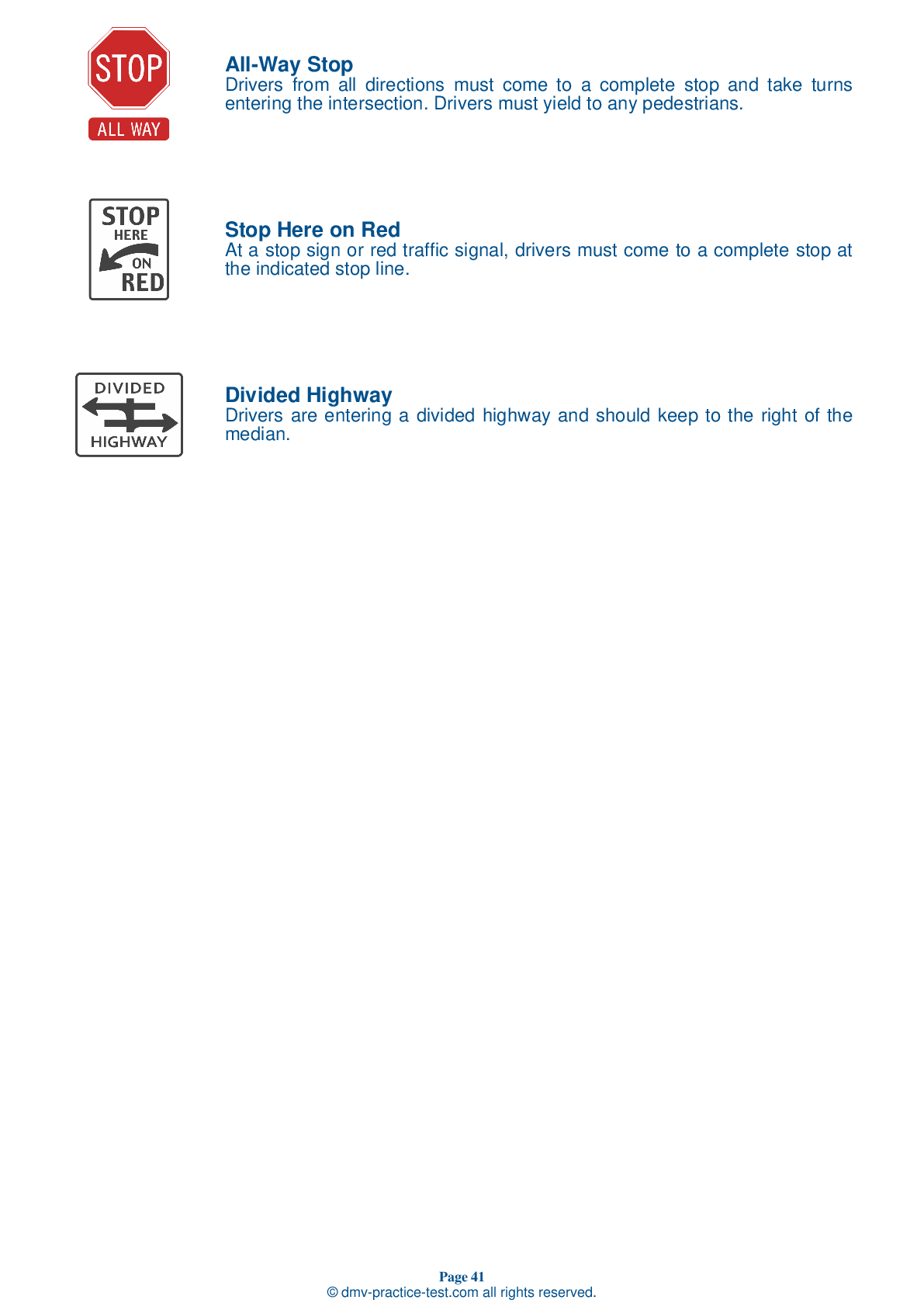FREE Iowa DMV Practice Test #7 Page 2 of 5
The DMV practise tests in Iowa have been updated for January 2025. It comprises questions based on the most important traffic signals and legislation for 2025 from the Iowa Driver Handbook. To study for the DMV driving permit test and driver's licence exam, use actual questions that are very similar (often identical!) to the DMV driving permit test and driver's licence exam.
Each question on the practise exam has a tip and explanation to help you recall the ideas. Questions about traffic rules, traffic signs, and driving statutes, as well as information from the Driver Handbook, will be included in the written portion of the official Iowa DMV test.
You must properly answer 28 of the 35 questions to receive a passing mark. To help you prepare for your Iowa instruction permit or driver's licence, take our DMV practise test.
The DMV exam is offered in a variety of languages.
Using any form of testing help will result in an automatic fail, and the DMV may take further action against your driver's licence, so avoid it.
9 . Headlights are required when visibility is less than:
Iowa law requires drivers to use their headlights from sunset to sunrise. Headlights must also be used at any other time when visibility is limited to 500 feet or less.
10 . On an undivided highway, if an emergency vehicle approaches while using its siren and flashing lights, you should:
You must yield the right-of-way to a police vehicle, fire engine, ambulance, or other emergency vehicle using a siren or air horn and red or blue flashing lights. Pull over to the right edge of the road, or as near to the right side as possible, when you see or hear an emergency vehicle approaching from any direction on an undivided highway.
11 . What does this road sign mean?

An octagonal sign always means stop. When approaching a stop sign, you must come to a complete stop at the marked stop line and proceed only when it is safe to do so. If there is no stop line, stop before the crosswalk. If there is no crosswalk, stop before the intersection at a point from which you can see any oncoming traffic.
12 . When driving in fog, you should use your low beam headlights:
You should always use your low beam headlights when driving in fog. High beam headlights may cause the light to reflect off of the fog and into your eyes.
13 . If your wheels drop off the pavement and onto the shoulder of the road, you should:
If your wheels drop off the pavement and onto a low shoulder, you should reduce your speed without braking and very carefully turn back onto the pavement. Be aware of any nearby traffic when re-entering the road.
14 . Because driving involves some risk, it is wise to continually improve your driving and observation skills.
Driving can become unsafe if drivers believe they have nothing to improve. For your safety and the safety of others, always strive to improve your driving and observation skills.
15 . When you see this sign, you must:

Any eight-sided sign is a stop sign. At an intersection with a stop sign, you must stop completely and check for pedestrians and cross traffic in the intersection. Wait for the intersection to clear before proceeding.
16 . A traffic light displaying a green arrow and a red light means that:
If a green arrow is shown with a red light, you can only drive in the direction of the arrow and only if the intersection is clear.
See the exact questions that will be on the 2025 Iowa DMV exam.
99.2% of people who use the cheat sheet pass the FIRST TIME
LT gives us an insight on how the cheat sheet provided her with all the study questions she needed before taking her test.
Joe initially studied with the handbook and failed his test, he eventually found us online, studied and pass his test the first time around.



